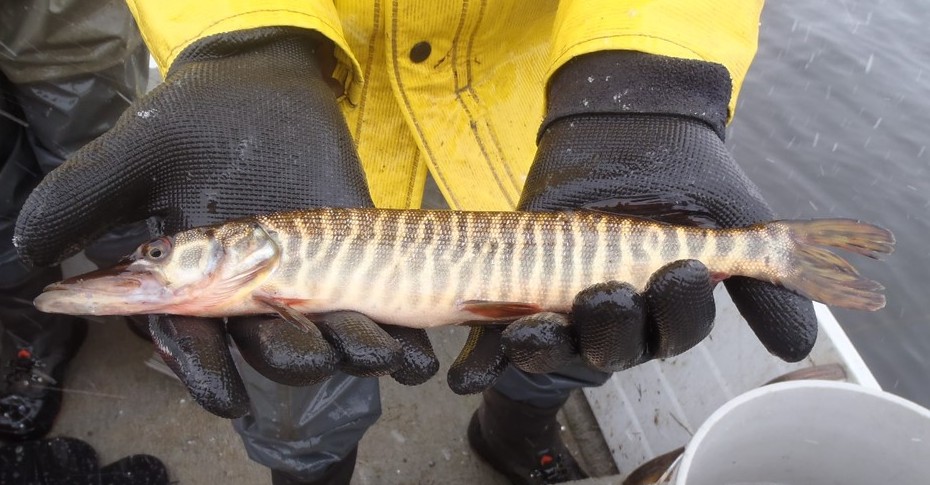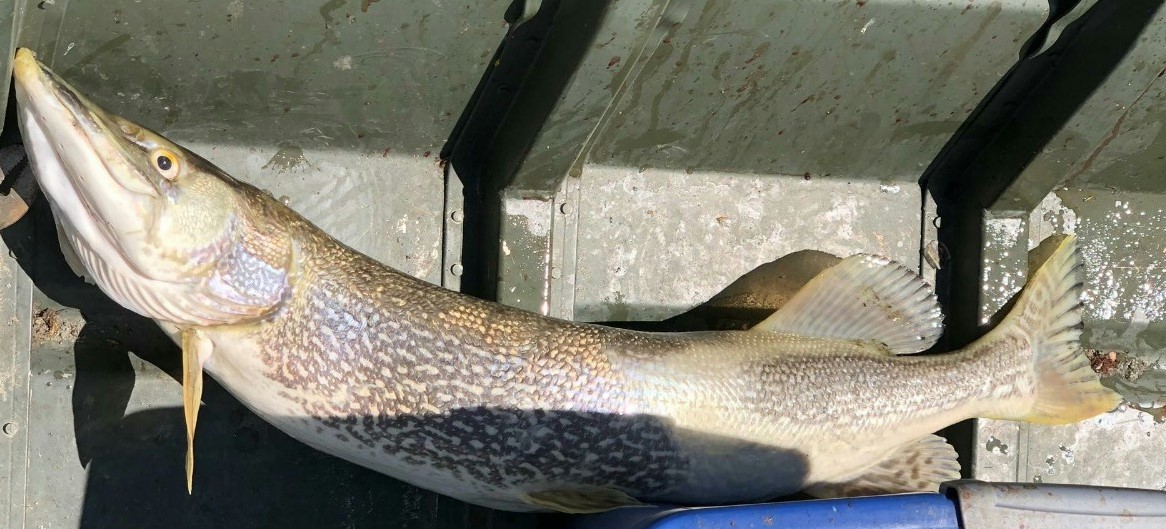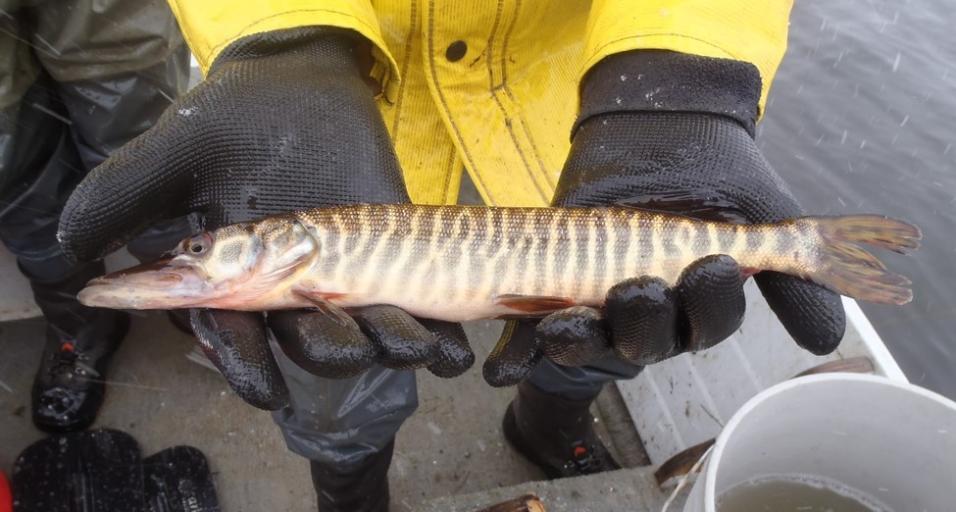Tiger muskie and northern pike
Tiger muskie are a sterile hybrid cross between northern pike and muskellunge. The Wyoming Game and Fish Department raises tiger muskie at the Dan Speas Fish Hatchery. They can grow to over 40 inches in length and are stocked to control other fish species as they feed primarily on fish. Because tiger muskie are sterile and don’t reproduce, their abundance is controlled through stocking rates and frequency. The statewide regulation allows harvest of one fish over 36 inches. This conservative regulation gives tiger muskie time to grow large and forage on fish before being vulnerable to harvest by anglers.
There are three waters in the Wind River Basin that have been stocked with tiger muskie since 2015. Approximately 1,260 were stocked in Middle Depression Reservoir, 1,015 in Lake Cameahwait, and 350 in Badwater Pond. Tiger muskie now range from 20.3 to 28.6 inches in Badwater Pond and 13.2 to 25.9 inches in Middle Depression Reservoir, and they have not been sampled in Lake Cameahwait.
A number of anglers have caught tiger muskie and mistaken them for northern pike but rest assured the fish caught from these Boysen area waters are sterile muskie. The confusion may be partly due to a couple northern pike that were caught in Ocean Lake in 2014 and 2015. A third large adult northern pike was found earlier this summer at Ocean Lake by an angler. Biologists have confirmed that these three fish were indeed northern pike.
It's not certain where the northern pike originated. However, the most likely scenario is that they were accidentally stocked with walleye that were brought into Wyoming from out of state. The status of northern pike in Ocean Lake is currently unknown. The fish found this year could very well be one of the original fish introduced with the other two. Biologists netted Ocean Lake in 2014, 2016, and 2018 and did not capture any northern pike suggesting natural reproduction may not have occurred. Biologists will continue monitoring for northern pike in Ocean Lake, but remain hopeful that adequate spawning habitat does not exist for a population to establish.
Biologists ask anglers who may catch a northern pike in Ocean Lake not to release it and contact the Wyoming Game and Fish Department immediately.


Tiger muskie and northern pike can be difficult to distinguish from one another because of the similar shape of their head, fins, and body. The top photo is a tiger muskie and bottom photo a northern pike. Tiger muskie tend to have lateral stripes giving it the “tiger” appearance while northern pike have large irregular shaped white spots along its side and a white belly.
There are three waters in the Wind River Basin that have been stocked with tiger muskie since 2015. Approximately 1,260 were stocked in Middle Depression Reservoir, 1,015 in Lake Cameahwait, and 350 in Badwater Pond. Tiger muskie now range from 20.3 to 28.6 inches in Badwater Pond and 13.2 to 25.9 inches in Middle Depression Reservoir, and they have not been sampled in Lake Cameahwait.
A number of anglers have caught tiger muskie and mistaken them for northern pike but rest assured the fish caught from these Boysen area waters are sterile muskie. The confusion may be partly due to a couple northern pike that were caught in Ocean Lake in 2014 and 2015. A third large adult northern pike was found earlier this summer at Ocean Lake by an angler. Biologists have confirmed that these three fish were indeed northern pike.
It's not certain where the northern pike originated. However, the most likely scenario is that they were accidentally stocked with walleye that were brought into Wyoming from out of state. The status of northern pike in Ocean Lake is currently unknown. The fish found this year could very well be one of the original fish introduced with the other two. Biologists netted Ocean Lake in 2014, 2016, and 2018 and did not capture any northern pike suggesting natural reproduction may not have occurred. Biologists will continue monitoring for northern pike in Ocean Lake, but remain hopeful that adequate spawning habitat does not exist for a population to establish.
Biologists ask anglers who may catch a northern pike in Ocean Lake not to release it and contact the Wyoming Game and Fish Department immediately.
Tiger muskie and northern pike can be difficult to distinguish from one another because of the similar shape of their head, fins, and body. The top photo is a tiger muskie and bottom photo a northern pike. Tiger muskie tend to have lateral stripes giving it the “tiger” appearance while northern pike have large irregular shaped white spots along its side and a white belly.
3073322688

